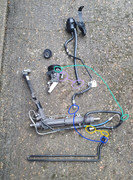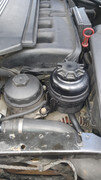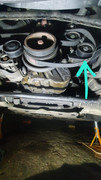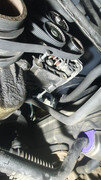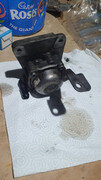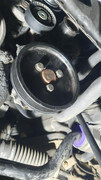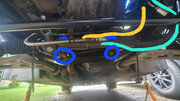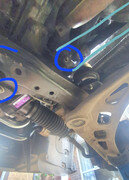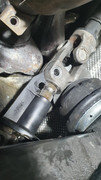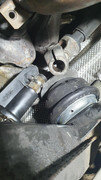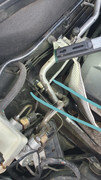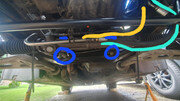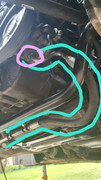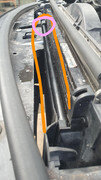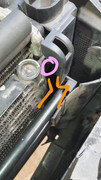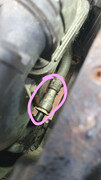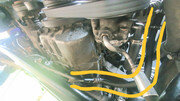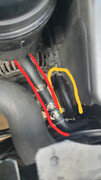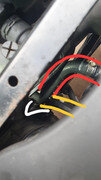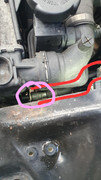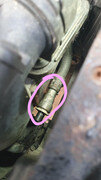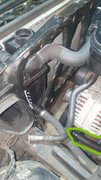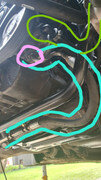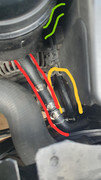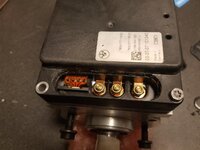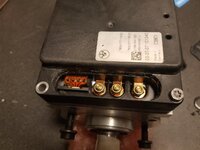I'm making this post as a supplemental guide off the back of the great information provided by two other member's threads on this conversion (credit also to the contributing members who continued those threads with more information - too many of you to name!):
(M54 specific conversion) @raymond.harper - https://z4-forum.com/forum/viewtopic.php?t=92858
(N52 specific conversion) @Hydro_Z4 - https://z4-forum.com/forum/viewtopic.php?t=118282
So hopefully this helps clarify a few parts of the installation/conversion. I don't want to leech the credit off them, so this will consist of my own photos with explanation, with links to the above two threads as necessary - but feel free to ask anything if it's not clear! I can't promise I've covered off everything so if you feel something is missing, you just may be correct haha.
The below parts list shows what parts are required, and this is where for some parts I'd encourage finding a fellow BMW owner who is breaking an E46 3 series, since some of the parts are discontinued by BMW or they have long lead times on delivery. Also, in lieu of locating the part numbers, please refer to Hydro_Z4's thread as it contains a comprehensive parts list, where some parts are interchangeable between M54 & N52 engines.
--------------------------------------------------------------------------------------------------------
Power Steering Reservoir & Hoses:
A) Power Steering Fluid Reservoir: 32416851217
B) Reservoir Mounting Bracket: 32411092940
C) Fluid Cooler Loop: 17111436262
D) Reservoir to Pump Hose: 32411095526
E) Reservoir to Cooler Loop Hose: Can't locate specific part number - see Hydro_Z4's thread linked above. Part 11 in image on page 1 under "Hoses (LHD)" or Part 14 on page 1 under "Hoses (RHD)"
((https://www.lllparts.co.uk/product/32411092940/bracket-oil-carrier) Reservoir diagram for further information
--------------------------------------------------------------------------------------------------------
Power Steering Pump:
A) LF-20 Power Steering Pump: 32416760036 (lots of different part numbers for this, 32416760034 also appears correct and I believe it is the former pump revision, before being replaced by the ..036 designation)
B) LF-20 Power Steering Pump Pulley: 32421740858
C) LF-20 Power Steering Pump Pulley Bolts: 07119915067 or 07119905527
D) LF-20 Forward Mounting Bracket: 32421740780 (find a breaker - on back order from BMW with no ETA when I tried ordering on 30/01/2025)
E) LF-20 Rear Mounting Bracket: 32421438695 (find a breaker - discontinued by BMW)
F) LF-20 Fwd/Rear Mounting Bracket Bolts (3 different ones needed): 1: 07119905403. 2: 07119900265. 3: 07119905529
With luck from a breaker, you can find an entire pump assembly, including the forward & rear brackets, pulley and all necessary bolts. I also tested fitment with an LF-30 pump (32411094965) used in later BMW 3 series models and it does fit when mounted using the above LF-20 forward mounting bracket, however the LF-20 rear mounting bracket will not fit between the pump & engine block mounting location properly. Also it appears that the offset of the LF-30 pump pulley mounting face means it does not line up with the rest of the Drive Belt pulleys; thus, I've concluded the LF-30 pump cannot work on the M54 engine block and will only work on the N52 engine block. This is also the reverse, so an LF-20 pump will not work on an N52 block.
((https://www.lllparts.co.uk/product/32421438695/bmw-32421438695-rear-vane-pump-bracket) or (https://www.lllparts.co.uk/product/32411094965) These are diagrams of the entire LF-20 pump assembly. Match up part numbers with diagram in your own time )
)
--------------------------------------------------------------------------------------------------------
Steering Intermediate (Lower) Shaft Assembly, Steering Rack & Lines:
Hydro_Z4's thread details more about which racks/shafts (insert joke here) are available for the conversion, my kit came with the below:
A) Steering Rack (Purple Tag E46 rack): 6755067
B) Z4M Intermediate Shaft: 32307836811 (It's here worth noting that a commonplace E46 intermediate shaft will not fit onto the Z4's upper steering column assembly so this Z4M part is required as it does fit between an E46 steering rack and Z4 (non-M) upper steering column assembly. This Z4M rack new is very expensive and may also not be available, so I advise to find either a breaker of a Z4M who will sell you this part, or see further in Hydro_Z4's thread about fabricating your own intermediate shaft. Link to new Z4M intermediate shaft: https://tinyurl.com/5crvvnea)
C) HP Line from Pump to Steering Rack: 32416774215 (Mentioned in Hydro_Z4's thread that this is LF-30 specific, however in my findings, the HP line in my kit fits both the LF-20 & LF-30 pumps, so I conclude that the connection type is the same and therefore this part is interchangeable - this with the caveat that my kit did have a couple self-made parts so this could be one of them, but since the thread pitch etc is the same between my LF-20 & LF-30 pumps, I assume the fact it may or may not be a self-made part is irrelevant. Open to correction here )
)
D) Hose from Steering Rack to Fluid Cooler Loop: 32416774214
((https://www.lllparts.co.uk/product/32416774214/bmw-32416774214-return-pipe) There are further ancillaries like fluid line bolts etc, all part numbers can be found on the linked parts page - this is for RHD vehicles)
--------------------------------------------------------------------------------------------------------
I believe the above contains all necessary parts to carry out this conversion, minus things like:
A) Tie rod assemblies, which for my build at least, I just swapped over between my Z4's stock steering rack and the E46 purple tag steering rack. I then used thick cable ties to fasten the tie rod boots over the steering rack and also to the outer track rod assembly.
B) There are also some bolts which you are advised to buy new for the installation, such as the E10 torx bolts connecting the Intermediate (Lower) Shaft assembly to both the steering rack and the upper steering column assembly - here I am just going to reuse these and apply a blue threadlock.
C) Hose clamps are required for some of the connections (such as the hose from the reservoir to the power steering pump). I bought a small assorted box of hose clamps and used whichever ones fit. From scouring the web, I found the torque specs for these clamps to be only 5.5nm so the chance of a hose clamp not seating properly and then failing are low I feel.
I will continue this in a further post below just for clarity/distinction.
(M54 specific conversion) @raymond.harper - https://z4-forum.com/forum/viewtopic.php?t=92858
(N52 specific conversion) @Hydro_Z4 - https://z4-forum.com/forum/viewtopic.php?t=118282
So hopefully this helps clarify a few parts of the installation/conversion. I don't want to leech the credit off them, so this will consist of my own photos with explanation, with links to the above two threads as necessary - but feel free to ask anything if it's not clear! I can't promise I've covered off everything so if you feel something is missing, you just may be correct haha.
The below parts list shows what parts are required, and this is where for some parts I'd encourage finding a fellow BMW owner who is breaking an E46 3 series, since some of the parts are discontinued by BMW or they have long lead times on delivery. Also, in lieu of locating the part numbers, please refer to Hydro_Z4's thread as it contains a comprehensive parts list, where some parts are interchangeable between M54 & N52 engines.
--------------------------------------------------------------------------------------------------------
Power Steering Reservoir & Hoses:
A) Power Steering Fluid Reservoir: 32416851217
B) Reservoir Mounting Bracket: 32411092940
C) Fluid Cooler Loop: 17111436262
D) Reservoir to Pump Hose: 32411095526
E) Reservoir to Cooler Loop Hose: Can't locate specific part number - see Hydro_Z4's thread linked above. Part 11 in image on page 1 under "Hoses (LHD)" or Part 14 on page 1 under "Hoses (RHD)"
((https://www.lllparts.co.uk/product/32411092940/bracket-oil-carrier) Reservoir diagram for further information
--------------------------------------------------------------------------------------------------------
Power Steering Pump:
A) LF-20 Power Steering Pump: 32416760036 (lots of different part numbers for this, 32416760034 also appears correct and I believe it is the former pump revision, before being replaced by the ..036 designation)
B) LF-20 Power Steering Pump Pulley: 32421740858
C) LF-20 Power Steering Pump Pulley Bolts: 07119915067 or 07119905527
D) LF-20 Forward Mounting Bracket: 32421740780 (find a breaker - on back order from BMW with no ETA when I tried ordering on 30/01/2025)
E) LF-20 Rear Mounting Bracket: 32421438695 (find a breaker - discontinued by BMW)
F) LF-20 Fwd/Rear Mounting Bracket Bolts (3 different ones needed): 1: 07119905403. 2: 07119900265. 3: 07119905529
With luck from a breaker, you can find an entire pump assembly, including the forward & rear brackets, pulley and all necessary bolts. I also tested fitment with an LF-30 pump (32411094965) used in later BMW 3 series models and it does fit when mounted using the above LF-20 forward mounting bracket, however the LF-20 rear mounting bracket will not fit between the pump & engine block mounting location properly. Also it appears that the offset of the LF-30 pump pulley mounting face means it does not line up with the rest of the Drive Belt pulleys; thus, I've concluded the LF-30 pump cannot work on the M54 engine block and will only work on the N52 engine block. This is also the reverse, so an LF-20 pump will not work on an N52 block.
((https://www.lllparts.co.uk/product/32421438695/bmw-32421438695-rear-vane-pump-bracket) or (https://www.lllparts.co.uk/product/32411094965) These are diagrams of the entire LF-20 pump assembly. Match up part numbers with diagram in your own time
--------------------------------------------------------------------------------------------------------
Steering Intermediate (Lower) Shaft Assembly, Steering Rack & Lines:
Hydro_Z4's thread details more about which racks/shafts (insert joke here) are available for the conversion, my kit came with the below:
A) Steering Rack (Purple Tag E46 rack): 6755067
B) Z4M Intermediate Shaft: 32307836811 (It's here worth noting that a commonplace E46 intermediate shaft will not fit onto the Z4's upper steering column assembly so this Z4M part is required as it does fit between an E46 steering rack and Z4 (non-M) upper steering column assembly. This Z4M rack new is very expensive and may also not be available, so I advise to find either a breaker of a Z4M who will sell you this part, or see further in Hydro_Z4's thread about fabricating your own intermediate shaft. Link to new Z4M intermediate shaft: https://tinyurl.com/5crvvnea)
C) HP Line from Pump to Steering Rack: 32416774215 (Mentioned in Hydro_Z4's thread that this is LF-30 specific, however in my findings, the HP line in my kit fits both the LF-20 & LF-30 pumps, so I conclude that the connection type is the same and therefore this part is interchangeable - this with the caveat that my kit did have a couple self-made parts so this could be one of them, but since the thread pitch etc is the same between my LF-20 & LF-30 pumps, I assume the fact it may or may not be a self-made part is irrelevant. Open to correction here
D) Hose from Steering Rack to Fluid Cooler Loop: 32416774214
((https://www.lllparts.co.uk/product/32416774214/bmw-32416774214-return-pipe) There are further ancillaries like fluid line bolts etc, all part numbers can be found on the linked parts page - this is for RHD vehicles)
--------------------------------------------------------------------------------------------------------
I believe the above contains all necessary parts to carry out this conversion, minus things like:
A) Tie rod assemblies, which for my build at least, I just swapped over between my Z4's stock steering rack and the E46 purple tag steering rack. I then used thick cable ties to fasten the tie rod boots over the steering rack and also to the outer track rod assembly.
B) There are also some bolts which you are advised to buy new for the installation, such as the E10 torx bolts connecting the Intermediate (Lower) Shaft assembly to both the steering rack and the upper steering column assembly - here I am just going to reuse these and apply a blue threadlock.
C) Hose clamps are required for some of the connections (such as the hose from the reservoir to the power steering pump). I bought a small assorted box of hose clamps and used whichever ones fit. From scouring the web, I found the torque specs for these clamps to be only 5.5nm so the chance of a hose clamp not seating properly and then failing are low I feel.
I will continue this in a further post below just for clarity/distinction.
